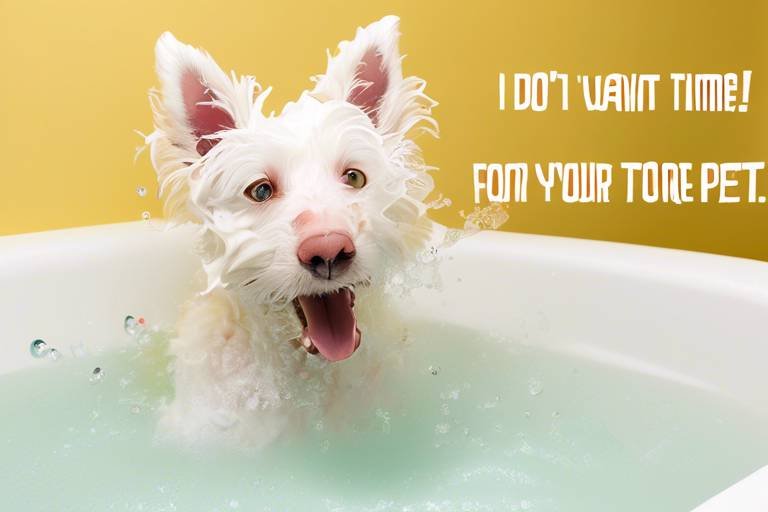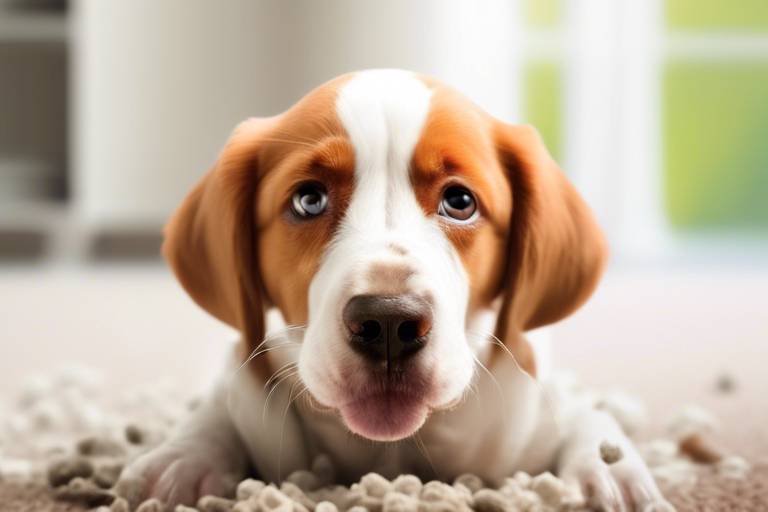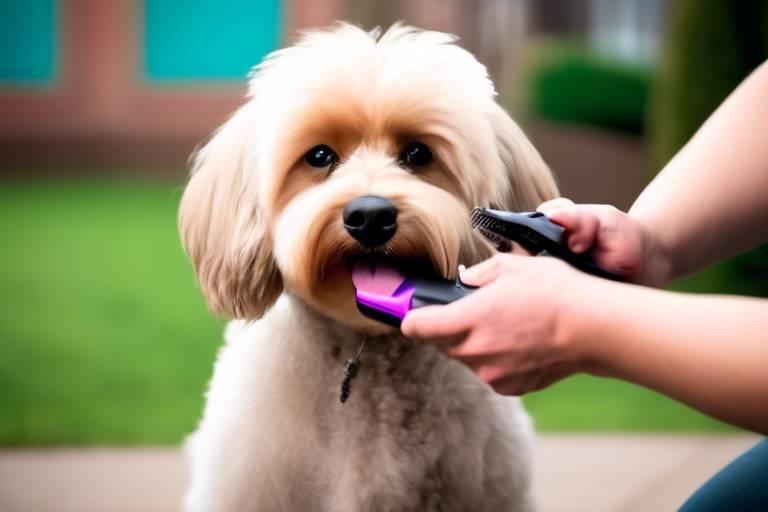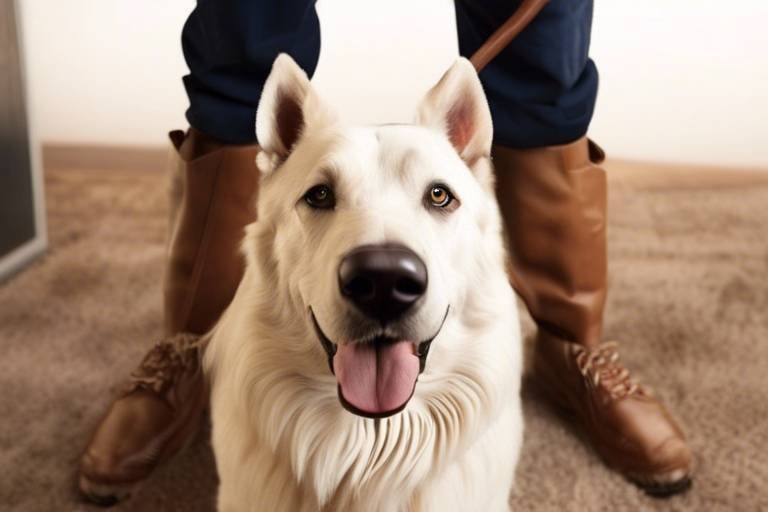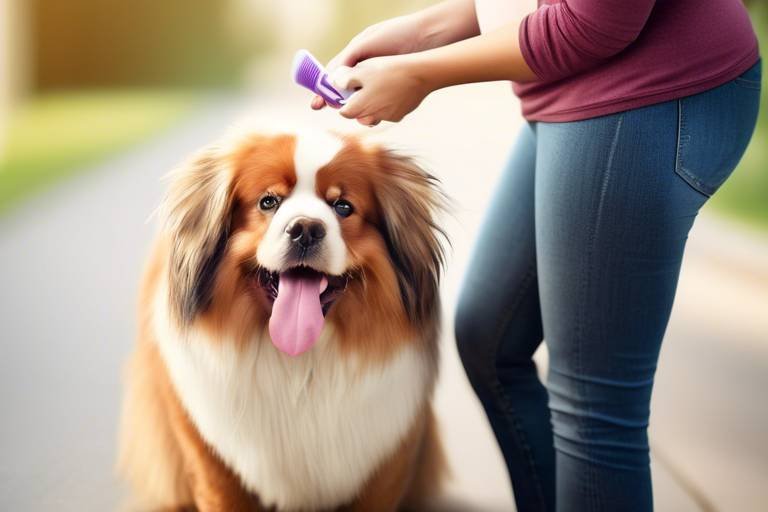How to Make Bath Time Fun for Your Pet
Bath time can often feel like a dreaded chore for both you and your furry friend, but it doesn't have to be that way! With a sprinkle of creativity and a dash of love, you can transform this necessary routine into an enjoyable bonding experience. Imagine your pet wagging their tail or purring contentedly, turning bath time into a delightful adventure rather than a stressful event. So, how do you make this happen? Let's dive into some innovative strategies that will not only ensure your pet stays clean but also make them look forward to their next bath!
First things first, selecting the right products is crucial. Using pet-friendly shampoos and conditioners can significantly enhance the bathing experience. These products are specially formulated to be gentle on your pet's skin and coat, minimizing irritation and promoting a healthy shine. When shopping for bathing supplies, keep an eye out for natural ingredients that are safe for pets. Avoid harsh chemicals that can cause discomfort. Here’s a quick rundown of what to look for:
- Hypoallergenic formulas: Perfect for pets with sensitive skin.
- Natural ingredients: Look for oatmeal or aloe vera, which can soothe and hydrate.
- Pleasant scents: Choose a fragrance that you both enjoy, but ensure it's not overwhelming.
By investing in quality products, you set the stage for a more enjoyable and less stressful bath time.
Next up, let’s talk about the environment where the magic happens. Setting up a safe and comfortable space for bathing can help alleviate anxiety in pets. Think of it as creating a little spa oasis for your furry companion. A calm environment can work wonders! Here are some tips to consider:
Maintaining the right water temperature is crucial for keeping your pet relaxed during bath time. If the water is too hot or too cold, it can make your pet uncomfortable and lead to a negative experience. Aim for lukewarm water, similar to the temperature you would use for a baby. This will ensure they feel cozy and secure throughout the experience.
Always test the water temperature with your wrist or elbow before introducing your pet to it. This simple step can prevent any unpleasant surprises and keep your pet calm.
Adding non-slip mats to the bathing area can help prevent slips and falls, making your pet feel more secure. A little extra grip can go a long way in easing their nerves. Think of it as giving them a safe haven where they can relax and enjoy the process.
Now, let's spice things up with some engaging activities! Incorporating toys or treats can make bath time feel more like playtime. For instance, floating toys can capture your pet's attention, distracting them from the water. You could also consider using a treat-dispensing toy that releases goodies as they bathe, making it a fun challenge for them!
Using praise and rewards during bath time can help create a positive association with the experience. When your pet associates bath time with fun and rewards, they’re more likely to look forward to it in the future. Here are some effective techniques:
Strategically offering treats during bath time can motivate your pet to cooperate. Keep a stash of their favorite goodies nearby and reward them for calm behavior. This not only encourages good behavior but also reinforces the idea that bath time can be a rewarding experience.
Consistently using encouraging words and gentle petting can help boost your pet's confidence. A simple “good boy” or “you’re doing great!” can work wonders. Your affectionate tone will reassure them, making the entire experience feel much more positive.
Finally, engaging your pet in fun activities after their bath can help solidify a positive experience. Whether it’s a game of fetch with their favorite toy or a cozy cuddle session, these moments can help them associate bath time with enjoyable moments. Remember, the goal is to create a routine that they look forward to rather than dread.
Q: How often should I bathe my pet?
A: It depends on the breed and lifestyle of your pet. Generally, once a month is sufficient for most dogs, while cats usually groom themselves and may not need regular baths.
Q: What if my pet hates water?
A: Start slow! Introduce them to water gradually and use positive reinforcement to create a positive experience. You can also try using a damp cloth for cleaning instead of a full bath.
Q: Are there any specific products I should avoid?
A: Yes! Avoid human shampoos, as they can disrupt your pet's skin pH. Stick to products specifically designed for pets.
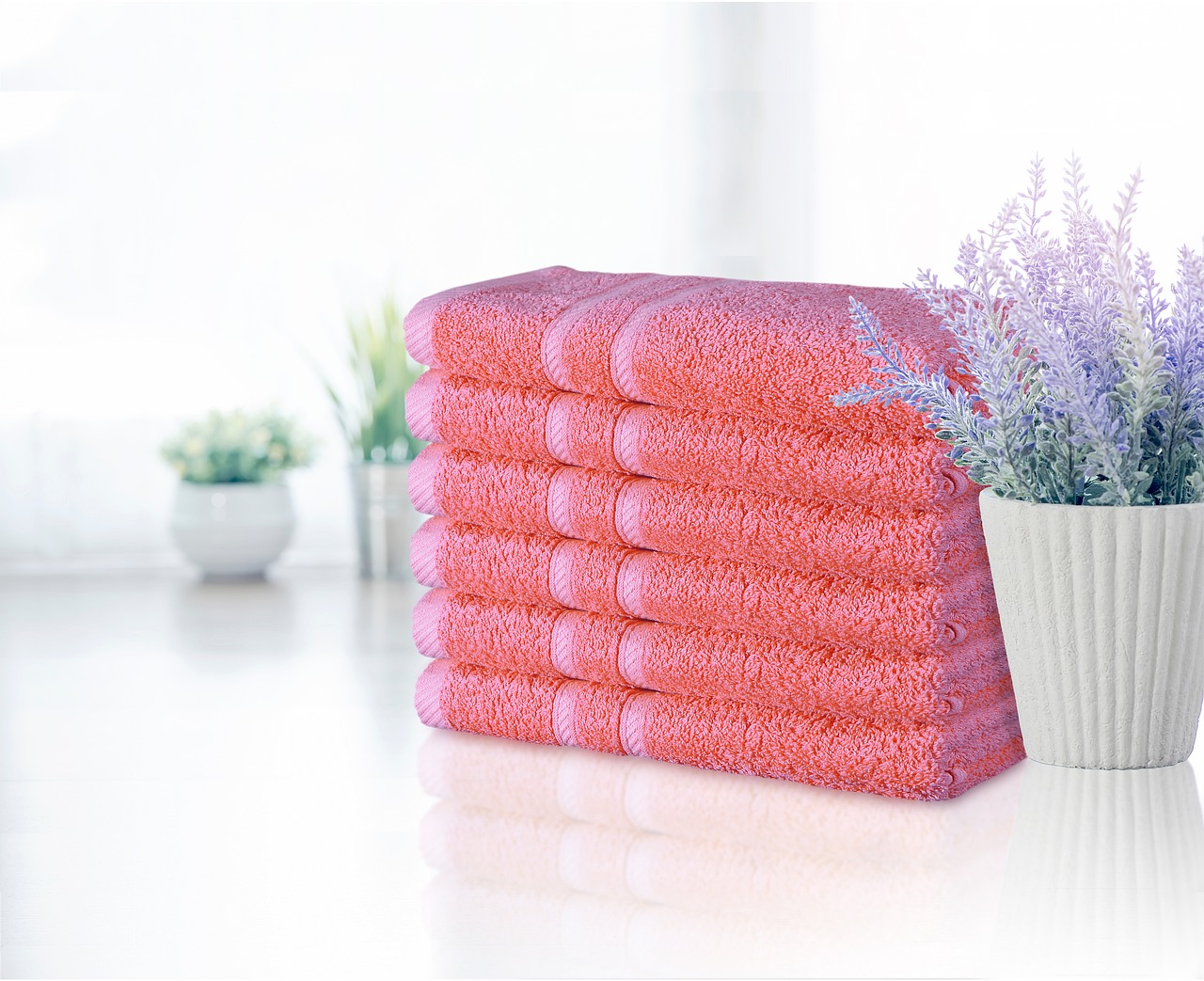
Choosing the Right Products
When it comes to bath time for your furry friend, one of the most crucial steps is . The market is flooded with various shampoos and conditioners, so picking the right ones can feel overwhelming. But fear not! This choice can significantly impact your pet's bathing experience, making it not only cleaner but also a lot more enjoyable. Imagine your pet's coat shining like a diamond after a refreshing bath, all thanks to the right shampoo!
First and foremost, always opt for pet-friendly products. Human shampoos often contain ingredients that can irritate your pet's skin or even cause allergic reactions. Look for products specifically designed for pets that are free from harsh chemicals, fragrances, and dyes. You want something gentle yet effective, something that will leave your pet smelling fresh without stripping their natural oils. A good rule of thumb is to check the label for terms like "hypoallergenic" or "natural ingredients".
Additionally, consider your pet's specific needs. For instance, if your dog has a skin condition, you might want to choose a medicated shampoo recommended by your veterinarian. On the other hand, if your pet has a thick, double coat, a conditioner that helps detangle and moisturize can be a game changer. Here’s a quick breakdown:
| Pet Type | Recommended Product | Key Benefits |
|---|---|---|
| Dogs | Oatmeal Shampoo | Soothes itchy skin, moisturizes |
| Cats | Hypoallergenic Shampoo | Gentle, reduces risk of irritation |
| Dogs with Allergies | Medicated Shampoo | Treats skin conditions |
| Long-Haired Dogs | Conditioning Shampoo | Detangles, adds shine |
Don’t forget about the fun aspect! Some brands offer shampoos with delightful scents or even colorful bubbles that can make bath time feel like a party. Imagine your pup getting a bubble bath that smells like a field of flowers! This can transform the experience from a chore into a delightful adventure. Just ensure that whatever you choose is safe for your pet to lick, as they tend to groom themselves after a bath.
Lastly, consider your pet's preferences. Some pets might love the smell of lavender, while others might prefer a fresh citrus scent. You can even conduct a little experiment by introducing your pet to a couple of different products. Watch their reaction—do they seem relaxed and happy, or do they shy away? This can guide you in selecting the perfect product that not only cleans but also pleases your pet's senses.

Creating a Comfortable Environment
When it comes to bath time, creating a comfortable environment for your pet is essential. Just like humans, pets can feel anxious or stressed when faced with unfamiliar situations. Imagine being thrust into a cold shower without any warning—yikes, right? That's how your furry friend might feel if you don't set the stage properly. So, let's dive into some ways to transform your bathing area into a pet-friendly oasis!
First off, consider the location of the bath. If you usually bathe your pet in a small tub, think about moving to a larger space, like a bathtub or even outside during warm weather. This change can make your pet feel less confined and more at ease. It's like moving from a cramped airplane seat to a spacious first-class cabin—much more enjoyable!
Next, let’s talk about temperature control. Pets are sensitive to temperature changes, so maintaining a comfortable water temperature is crucial. A good rule of thumb is to keep the water warm, but not hot. You can easily check the temperature by using your wrist or elbow—these areas are more sensitive and will give you a good idea of how your pet will feel. After all, you wouldn’t want to take a bath in water that feels like a sauna!
Before introducing your pet to the water, always test it. You can do this by:
- Using your wrist or elbow to check the warmth
- Ensuring the water feels comfortable, similar to a warm hug
Taking a moment to test the water can make all the difference in your pet's comfort level. It’s a small step that ensures a more enjoyable experience for both of you.
Another important aspect is safety. Adding non-slip mats to the bathing area can help prevent any slips and falls. Pets can be wobbly on wet surfaces, and a sudden slip can lead to fear and anxiety during future baths. Think of these mats as a cozy rug that gives your pet a sense of stability. They’ll feel more secure, allowing them to relax and enjoy the process.
Finally, consider the overall ambiance of the bathing area. Soft lighting and calming music can create a serene atmosphere. Maybe even add some gentle, pet-safe aromatherapy to soothe your furry friend. Just like a spa day for humans, a little pampering goes a long way in creating a positive experience for your pet.
In conclusion, by focusing on temperature, safety, and ambiance, you can create a comfortable environment that transforms bath time from a chore into a delightful bonding experience. Your pet will not only leave the bath feeling clean but will also associate the experience with comfort and love. Now, who wouldn’t want that?
Q: How often should I bathe my pet?
A: It depends on the type of pet and their lifestyle. Generally, dogs may need a bath every 4-6 weeks, while cats typically require less frequent bathing.
Q: What if my pet hates water?
A: Start by introducing them to water gradually. Use positive reinforcement, like treats and praise, to create a positive association with bath time.
Q: Can I use human shampoo on my pet?
A: No, it's best to use pet-specific shampoos as they are formulated to be gentle on their skin and fur.
Q: How can I dry my pet after a bath?
A: Use a pet-friendly towel and gently pat them dry. If they are comfortable with it, you can also use a low-heat blow dryer, keeping it at a safe distance.
Temperature Control
Explore creative ways to transform bath time into an enjoyable experience for your furry friend, ensuring cleanliness while enhancing the bond between you and your pet.
Selecting pet-friendly shampoos and conditioners can significantly impact your pet's bathing experience, making it more enjoyable and less stressful for both of you.
Setting up a safe and comfortable space for bathing can help alleviate anxiety in pets, making the process more pleasant and fun.
Maintaining the right water temperature is crucial for keeping your pet relaxed during bath time, ensuring they feel comfortable and safe throughout the experience. Just imagine how you would feel if you jumped into a bath that was either freezing cold or scalding hot—your pet experiences the same discomfort. Ideally, the water should be warm but not too hot, similar to a cozy bath that you would enjoy after a long day.
To find that perfect temperature, always test the water with your wrist or elbow before introducing your pet. This method is reliable because these parts of your body are sensitive enough to detect temperature variations accurately. If it feels pleasant to you, it’s likely to be comfortable for your pet as well.
Before you start the bath, take a moment to test the water. Here’s how you can do it:
- Fill the tub or basin with water.
- Dip your wrist or elbow into the water.
- If it feels warm but not hot, it's likely just right for your pet.
This simple test can make a world of difference, ensuring that your pet doesn’t associate bath time with discomfort or fear.
Another essential aspect of temperature control is the overall safety of the bathing area. Adding non-slip mats can help prevent slips and falls, making your pet feel more secure during their bath. When pets are in a slippery tub, they may panic, which could lead to a negative experience. Non-slip mats provide traction, allowing your furry friend to stand comfortably without the fear of sliding around. Think of it as laying down a welcome mat for your pet, making them feel at home even in a potentially stressful situation.
Incorporating toys or treats can make bath time more engaging for your pet, turning a typically mundane task into a fun activity.
Using praise and rewards during bath time can help create a positive association with the experience, encouraging your pet to look forward to future baths.
Strategically offering treats during bath time can motivate your pet to cooperate, making the process smoother and more enjoyable for both of you.
Consistently using encouraging words and gentle petting can help boost your pet's confidence, reinforcing their positive behavior during bath time.
Engaging your pet in fun activities after their bath can help solidify a positive experience, ensuring they associate bath time with enjoyable moments.
Q: How often should I bathe my pet?
A: It depends on the breed and lifestyle of your pet. Generally, dogs can be bathed every 4-6 weeks, while cats may require less frequent baths.
Q: What if my pet hates water?
A: Gradually introduce your pet to water with positive reinforcement, and consider using a spray bottle instead of submerging them in water.
Q: Can I use human shampoo on my pet?
A: No, human shampoos can irritate your pet's skin. Always use pet-specific products that are gentle and formulated for their needs.
Testing Water Temperature
Explore creative ways to transform bath time into an enjoyable experience for your furry friend, ensuring cleanliness while enhancing the bond between you and your pet.
Selecting pet-friendly shampoos and conditioners can significantly impact your pet's bathing experience, making it more enjoyable and less stressful for both of you.
Setting up a safe and comfortable space for bathing can help alleviate anxiety in pets, making the process more pleasant and fun.
Maintaining the right water temperature is crucial for keeping your pet relaxed during bath time, ensuring they feel comfortable and safe throughout the experience.
Before you introduce your pet to the bath, it’s essential to ensure that the water temperature is just right. Think of it as preparing a cozy nest for your little one; you wouldn’t want them to feel uncomfortable, would you? A good rule of thumb is to aim for a temperature that feels warm but not hot to your skin. The best way to test the water is by using your wrist or elbow. These areas are more sensitive than your hands, allowing you to gauge the temperature accurately.
Here’s a simple method to follow:
- Fill the tub or basin with water, making sure to start with a moderate amount.
- Use your wrist or elbow to dip into the water.
- If it feels warm but not burning, you’re good to go!
- If it feels too hot, add some cold water to balance it out.
- If it’s too cold, warm it up a bit before bringing in your pet.
Remember, your pet's comfort is paramount. A sudden shock from water that’s too cold or too hot can lead to a negative association with bath time, making them dread it in the future. So, take a moment to ensure the water is just right, and you'll be setting the stage for a much happier bath experience.
Adding non-slip mats to the bathing area can help prevent slips and falls, making your pet feel more secure during their bath.
Incorporating toys or treats can make bath time more engaging for your pet, turning a typically mundane task into a fun activity.
Using praise and rewards during bath time can help create a positive association with the experience, encouraging your pet to look forward to future baths.
Strategically offering treats during bath time can motivate your pet to cooperate, making the process smoother and more enjoyable for both of you.
Consistently using encouraging words and gentle petting can help boost your pet's confidence, reinforcing their positive behavior during bath time.
Engaging your pet in fun activities after their bath can help solidify a positive experience, ensuring they associate bath time with enjoyable moments.
Q: How often should I bathe my pet?
A: It really depends on the breed and lifestyle of your pet. Some pets may need a bath every month, while others might only require one a few times a year. Always consult with your vet for personalized advice.
Q: Can I use human shampoo on my pet?
A: No, it’s best to use shampoos specifically formulated for pets. Human shampoos can disrupt the pH balance of your pet’s skin, leading to irritation.
Q: What if my pet hates baths?
A: Start slowly! Use positive reinforcement techniques, like treats and praise, to create a positive association with bath time. It may take some time, but patience is key.
Using Non-Slip Mats
Explore creative ways to transform bath time into an enjoyable experience for your furry friend, ensuring cleanliness while enhancing the bond between you and your pet.
Selecting pet-friendly shampoos and conditioners can significantly impact your pet's bathing experience, making it more enjoyable and less stressful for both of you.
Setting up a safe and comfortable space for bathing can help alleviate anxiety in pets, making the process more pleasant and fun.
Maintaining the right water temperature is crucial for keeping your pet relaxed during bath time, ensuring they feel comfortable and safe throughout the experience.
Always test the water temperature with your wrist or elbow before introducing your pet to ensure it’s neither too hot nor too cold.
Imagine your pet, all wet and slippery, trying to stand in a tub or on a tiled floor. It’s like trying to balance on ice! This is where non-slip mats come into play. These mats are a game changer when it comes to bath time safety and comfort. By providing a textured surface, non-slip mats help your furry friend maintain their footing, which can significantly reduce their anxiety during bath time.
When selecting a non-slip mat, look for one that is specifically designed for wet environments. These mats are often made from materials that grip well even when wet, ensuring that your pet doesn’t slide around. Here are some key features to consider:
- Water Resistance: Ensure the mat can withstand water exposure without degrading.
- Easy to Clean: Choose mats that can be easily washed or rinsed off after use.
- Durability: Look for mats that can handle the wear and tear of regular use.
Placing the mat in the bathtub or on the floor where your pet will stand during the bath can make a world of difference. Not only does it prevent slips and falls, but it also gives your pet a sense of security. They can focus on enjoying the bath rather than worrying about losing their balance. It’s a simple addition that transforms bath time from a stressful chore into a fun and safe experience.
Incorporating toys or treats can make bath time more engaging for your pet, turning a typically mundane task into a fun activity.
Using praise and rewards during bath time can help create a positive association with the experience, encouraging your pet to look forward to future baths.
Strategically offering treats during bath time can motivate your pet to cooperate, making the process smoother and more enjoyable for both of you.
Consistently using encouraging words and gentle petting can help boost your pet's confidence, reinforcing their positive behavior during bath time.
Engaging your pet in fun activities after their bath can help solidify a positive experience, ensuring they associate bath time with enjoyable moments.
Q: How often should I bathe my pet?
A: This depends on the breed and lifestyle of your pet. Generally, dogs should be bathed every 4-6 weeks, while cats are usually fine with less frequent baths.
Q: Can I use human shampoo on my pet?
A: No, human shampoos can irritate your pet’s skin. Always use products specifically formulated for pets.
Q: What if my pet hates baths?
A: Start with short sessions and use positive reinforcement techniques to help them associate bath time with good experiences.
Engaging Activities During Bathing
Bath time doesn’t have to be a chore; it can be a delightful adventure for both you and your furry friend! One of the best ways to transform this routine into a fun-filled experience is by incorporating engaging activities. Think of it as turning a mundane task into a playful bonding session. Just like kids love splashing around in the water, your pet can also find joy in the bathtub. So, how can you make bath time more entertaining? Here are some creative ideas!
First off, consider introducing toys that are safe for water play. Floating rubber ducks, squeaky toys, or even a simple ball can keep your pet engaged and distracted from the fact that they’re being bathed. Imagine your pup chasing a toy around in the tub; it’s not just a bath; it’s a mini aquatic adventure! You can even create a little game by tossing the toys into the water for them to fetch. This not only makes the experience enjoyable but also encourages them to cooperate during the washing process.
Another fantastic way to keep your pet entertained is by using treats. You can sprinkle some of their favorite snacks around the bathing area or even hold them in your hand as a reward for good behavior. This creates a positive association with bath time and encourages your pet to look forward to it rather than dread it. Just remember to choose treats that are healthy and suitable for your pet's diet. You might be surprised at how much more willing they are to hop into the tub when they know there’s a tasty reward waiting for them!
To add an extra layer of fun, consider playing some light music during bath time. Animals respond well to soothing sounds, and the right tunes can create a calm yet enjoyable atmosphere. Think of it as setting the mood for a spa day! You might even notice your pet relaxing more, making the entire experience smoother for both of you.
Lastly, don’t forget about the power of interaction. Talk to your pet in a cheerful voice, encouraging them throughout the process. Use phrases like “Good boy!” or “You’re doing great!” This verbal reinforcement not only boosts their confidence but also strengthens your bond. It’s like having a little pep talk while they’re getting clean, making them feel loved and appreciated.
By integrating these engaging activities into bath time, you’ll not only keep your pet entertained but also transform the experience into a cherished moment that both of you will look forward to. Remember, the goal is to create a fun environment where your pet feels safe and happy, turning what was once a dreaded task into a delightful ritual!
Q: How can I make my pet feel more comfortable during bath time?
A: Start by creating a calm environment, using warm water, and introducing toys or treats to keep them engaged.
Q: What type of toys are safe for bath time?
A: Look for waterproof, non-toxic toys specifically designed for pets, like floating balls or rubber ducks.
Q: How often should I bathe my pet?
A: It depends on the breed and lifestyle of your pet, but generally, bathing once a month is sufficient for most dogs. Consult your vet for specific recommendations.
Q: What if my pet hates water?
A: Gradually introduce them to water through play and positive reinforcement. Start with shallow water and slowly increase the amount as they become more comfortable.
Q: Can I use human shampoo on my pet?
A: No, it’s best to use pet-specific shampoos as human products can irritate their skin.

Positive Reinforcement Techniques
When it comes to making bath time a delightful experience for your furry friend, positive reinforcement is your best ally. Imagine how much easier it is to encourage a child to clean their room with a reward rather than a scolding. The same principle applies to our pets! By using praise and rewards, you can turn bath time from a dreaded chore into a fun and engaging activity.
First and foremost, it's essential to understand the psychology of your pet. Just like humans, pets thrive on encouragement and positive feedback. When your pet behaves well during bath time, a simple “good boy!” or “you’re such a good girl!” can go a long way. This verbal praise not only boosts their confidence but also helps them associate bath time with good feelings. Think of it as building a bridge of trust between you and your pet, making future baths easier.
Now, let’s talk about treats—the ultimate motivator! Strategically offering treats can make a world of difference. For instance, you might give your pet a small treat before the bath to create a positive expectation. Then, during the bath, you can offer another treat each time they remain calm or follow your commands. This method reinforces their good behavior and makes them more likely to cooperate in the future. Just be mindful of the quantity; you don’t want to turn bath time into a feast!
Another effective technique is to use verbal praise along with gentle petting. Pets are incredibly sensitive to tone and touch. When you speak to them in a soothing voice while gently massaging their fur, it can significantly reduce their anxiety. Picture this: you’re in a stressful situation, and someone is calmly reassuring you with kindness. Wouldn’t that make you feel a lot better? Your pet feels the same way!
Here’s a quick overview of how to implement positive reinforcement during bath time:
| Technique | Description |
|---|---|
| Verbal Praise | Use encouraging words to build confidence and create a positive association. |
| Treats | Offer small treats before, during, and after the bath to motivate and reward good behavior. |
| Gentle Petting | Soothing touch can help calm your pet and make them feel secure. |
Incorporating these techniques can transform your pet's bath time experience. Instead of viewing it as a necessary evil, they will begin to see it as a fun and rewarding activity. Remember, the goal is to create a positive association with bath time, so be patient and consistent. Over time, your pet will look forward to their baths, and both of you will enjoy the bonding moments that come with it!
- How can I make my pet more comfortable during bath time? Start by creating a calm environment, using warm water, and providing plenty of praise and treats.
- What type of shampoo should I use for my pet? Always choose a pet-friendly shampoo that is appropriate for your pet's specific needs (e.g., sensitive skin, allergies).
- How often should I bathe my pet? It depends on the breed and lifestyle of your pet. Generally, dogs are bathed every 4-6 weeks, while cats may require less frequent baths.
Using Treats Effectively
When it comes to bath time, treats can be a game changer! Think of treats as the golden ticket that transforms a dreaded chore into an exciting adventure for your furry friend. By strategically offering treats throughout the bathing process, you can motivate your pet to cooperate and even enjoy the experience. But how do you use treats effectively? Let’s dive into some tips that will make bath time a breeze!
First and foremost, timing is everything. You want to reward your pet at the right moments to create a positive association with bath time. For instance, as soon as your pet steps into the bathing area, offer a treat. This simple act can help them understand that bath time is not something to fear, but rather a time filled with tasty surprises. You can also give treats after they successfully endure a rinse or a scrub, reinforcing their good behavior.
Another effective strategy is to use treats that are highly appealing to your pet. Not all treats are created equal, and the right one can make all the difference. For dogs, small pieces of cooked chicken or cheese can be irresistible, while cats might go wild for tuna flakes. Consider creating a list of your pet's favorite treats to ensure you have the best options on hand:
- For Dogs:
- Cooked chicken
- Cheese cubes
- Peanut butter (spread on a toy)
- For Cats:
- Tuna flakes
- Catnip-infused treats
- Small bits of cooked fish
Additionally, consider the presentation of the treats. Instead of just handing them over, you can make it a part of the bathing ritual. For example, you might hold a treat just out of reach to encourage your pet to step into the bath willingly. This playful approach not only makes them more engaged but also helps to build excitement around the process.
Lastly, don’t forget to mix in some verbal praise! While treats are a fantastic motivator, your pet also craves your attention and affection. Pairing treats with enthusiastic words like, “Good boy!” or “You’re such a brave kitty!” can enhance their experience. This combination of treats and praise creates a winning formula for a successful bath time.
By using treats effectively, you can turn bath time from a stressful ordeal into a fun bonding experience. Remember, the goal is to make your pet feel safe and happy, so they look forward to their next bath instead of dreading it. With a little creativity and a handful of tasty rewards, bath time can become a highlight of your pet’s day!
Q: How many treats should I give my pet during bath time?
A: It depends on your pet’s size and dietary needs, but moderation is key. Aim for small treats and adjust based on how your pet responds.
Q: Can I use regular dog or cat food as treats?
A: Yes, if your pet loves their regular kibble, you can use it as a reward. Just remember to keep it special by using it sparingly during bath time.
Q: What if my pet refuses to take treats during bath time?
A: If your pet is too stressed to eat, try giving them a break and returning to the bath later. You might also want to try different treats to find what excites them.
Verbal Praise and Affection
Explore creative ways to transform bath time into an enjoyable experience for your furry friend, ensuring cleanliness while enhancing the bond between you and your pet.
Selecting pet-friendly shampoos and conditioners can significantly impact your pet's bathing experience, making it more enjoyable and less stressful for both of you.
Setting up a safe and comfortable space for bathing can help alleviate anxiety in pets, making the process more pleasant and fun.
Maintaining the right water temperature is crucial for keeping your pet relaxed during bath time, ensuring they feel comfortable and safe throughout the experience.
Always test the water temperature with your wrist or elbow before introducing your pet to ensure it’s neither too hot nor too cold.
Adding non-slip mats to the bathing area can help prevent slips and falls, making your pet feel more secure during their bath.
Incorporating toys or treats can make bath time more engaging for your pet, turning a typically mundane task into a fun activity.
Using praise and rewards during bath time can help create a positive association with the experience, encouraging your pet to look forward to future baths.
Strategically offering treats during bath time can motivate your pet to cooperate, making the process smoother and more enjoyable for both of you.
When it comes to making bath time a delightful experience for your furry friend, play a pivotal role. Imagine how comforting it is to hear a loved one’s encouraging words while facing something that might seem daunting. Your pet feels the same way! During the bath, use a gentle, upbeat tone to let your pet know they are doing great. Phrases like, “Good boy!” or “You’re such a brave girl!” can work wonders to ease their anxiety. The warmth of your voice can be as soothing as the warm water itself.
Moreover, don’t underestimate the power of physical affection. A gentle scratch behind the ears or a soft pat can reinforce your words, creating a stronger bond between you and your pet. The combination of verbal praise and physical touch can transform bath time into a cherished bonding experience. To further enhance this connection, consider incorporating these tips:
- Use a calm and cheerful tone throughout the bath.
- Offer frequent praise, especially when your pet shows good behavior.
- Follow verbal praise with a gentle pet or scratch to reinforce the positive experience.
By consistently using verbal encouragement and affectionate gestures, you’ll help your pet associate bath time with love and support. This positive reinforcement not only makes the current bath enjoyable but also sets the stage for future baths to be less stressful and more fun!
Engaging your pet in fun activities after their bath can help solidify a positive experience, ensuring they associate bath time with enjoyable moments.
- How often should I bathe my pet? It depends on the breed and lifestyle of your pet. Generally, dogs can be bathed every 4-6 weeks, while cats usually groom themselves and may require less frequent baths.
- What products are safe for my pet’s skin? Always opt for pet-specific shampoos and conditioners that are free from harsh chemicals and fragrances.
- Can I use human shampoo on my pet? No, human shampoos can be too harsh for pets and may lead to skin irritation or allergies.
- What if my pet hates baths? Start slow, use positive reinforcement, and make the experience as enjoyable as possible with treats and praise.
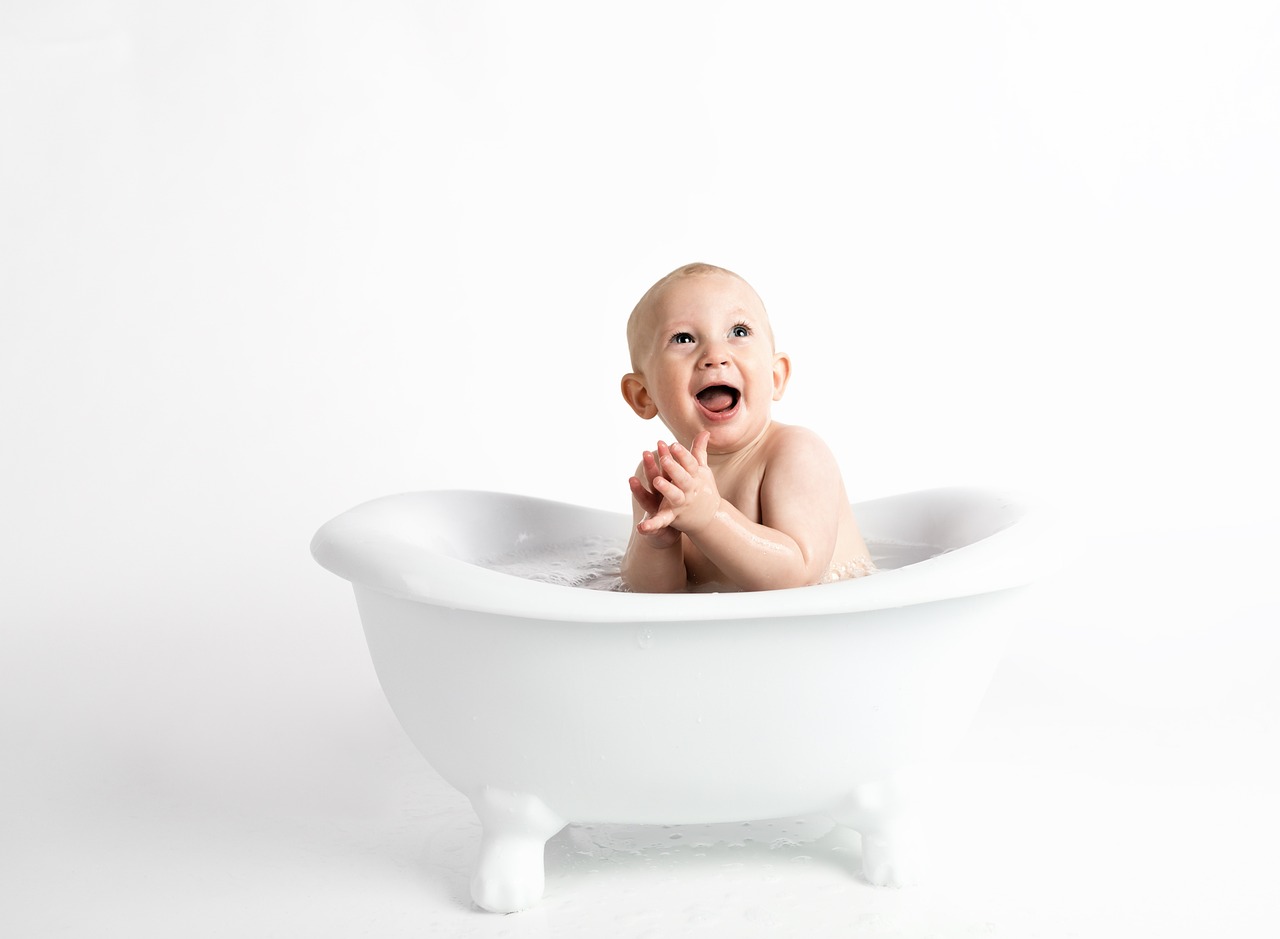
Post-Bath Fun Activities
After the sudsy splashes and the rinse-off, bath time doesn't have to end on a dull note. In fact, it’s the perfect opportunity to turn the experience into a delightful bonding session with your furry friend! Just like how kids look forward to playtime after a bath, your pet can also enjoy some fun activities that will make them forget all about the water and shampoo. So, what can you do to keep the good vibes rolling?
One great way to kick off the post-bath fun is by engaging in some interactive play. Grab your pet’s favorite toy—whether it’s a squeaky bone or a fluffy ball—and let the games begin! This not only helps them shake off any lingering anxiety from the bath but also reinforces the idea that bath time leads to fun time. Imagine the joy on your pet's face as they leap and bound around the room, tail wagging like a flag in the wind!
Another fantastic idea is to incorporate some light training exercises. You can use this time to reinforce commands like “sit,” “stay,” or even teach them a new trick. Not only does this keep their mind sharp, but it also creates a positive association with bath time. Picture this: your pet, all clean and shiny, performing tricks for treats. It’s a win-win situation!
Don’t forget about the power of treats! Offering a special treat after the bath can serve as a reward that your pet will look forward to. You could even create a little post-bath snack time ritual. For instance, after drying off, you can lead your pet to their favorite spot and present them with a delicious treat. This simple act can turn bath time from a chore into a cherished routine.
Lastly, consider some quality cuddle time. After all the excitement, your pet might just want to relax and soak in the love. Cuddling is a great way to reinforce your bond, and it can help calm any post-bath jitters. Just imagine snuggling up with your freshly bathed pet, their fur warm and soft—pure bliss!
Q: How can I make my pet more comfortable during bath time?
A: Creating a comfortable environment is key. Use non-slip mats, maintain a pleasant water temperature, and ensure the area is free from distractions. Engaging them with toys can also help ease their anxiety.
Q: What if my pet hates baths?
A: Start by introducing them to the bathing area without water. Gradually get them used to the process and use positive reinforcement techniques like treats and praise to create a more enjoyable experience.
Q: How often should I bathe my pet?
A: This depends on the breed and lifestyle of your pet. Generally, dogs with oily coats may need more frequent baths, while others may only require a bath every few months. Consult your vet for the best schedule for your furry friend.
Q: Can I use human shampoo on my pet?
A: No, it’s best to use pet-specific shampoos as human products can irritate their skin. Always choose pet-friendly products to ensure their safety and comfort.
Q: What should I do if my pet refuses to get into the bath?
A: Use treats and toys to lure them in. Make the bathing area inviting and comfortable. You can also try bathing them in a smaller tub or even the sink, depending on their size.
Frequently Asked Questions
- How often should I bathe my pet?
Bathing frequency can vary based on your pet's breed, coat type, and lifestyle. Generally, dogs can be bathed every 4 to 6 weeks, while cats usually require less frequent baths, unless they get into something messy. Always consult with your vet for specific recommendations tailored to your pet.
- What products should I use for my pet's bath?
It's essential to use pet-friendly shampoos and conditioners that are specifically formulated for your furry friend. Look for products that are free of harsh chemicals and fragrances. Natural ingredients are often a safe bet, ensuring a pleasant bathing experience without skin irritation.
- How can I make my pet feel comfortable during bath time?
Creating a comfortable environment is key! Use non-slip mats to prevent slips, maintain a warm water temperature, and consider playing soft music to soothe your pet. Engaging them with toys or treats can also help keep their mind off the bath.
- What temperature should the water be for bathing?
The water should be lukewarm, similar to the temperature you would use for a baby. Always test it with your wrist or elbow to ensure it's comfortable. Too hot or too cold can make your pet anxious and lead to a negative experience.
- How can I encourage my pet to enjoy bath time?
Using positive reinforcement techniques is a great way to make bath time enjoyable! Offer treats, praise, and affection during and after the bath. This will help your pet associate bath time with positive experiences, making them more likely to look forward to it in the future.
- What should I do after the bath?
Engage your pet in fun activities after their bath to reinforce positive associations. This could be playtime with their favorite toy, a nice walk, or even some cuddle time. The goal is to make them feel happy and rewarded after the bath.

